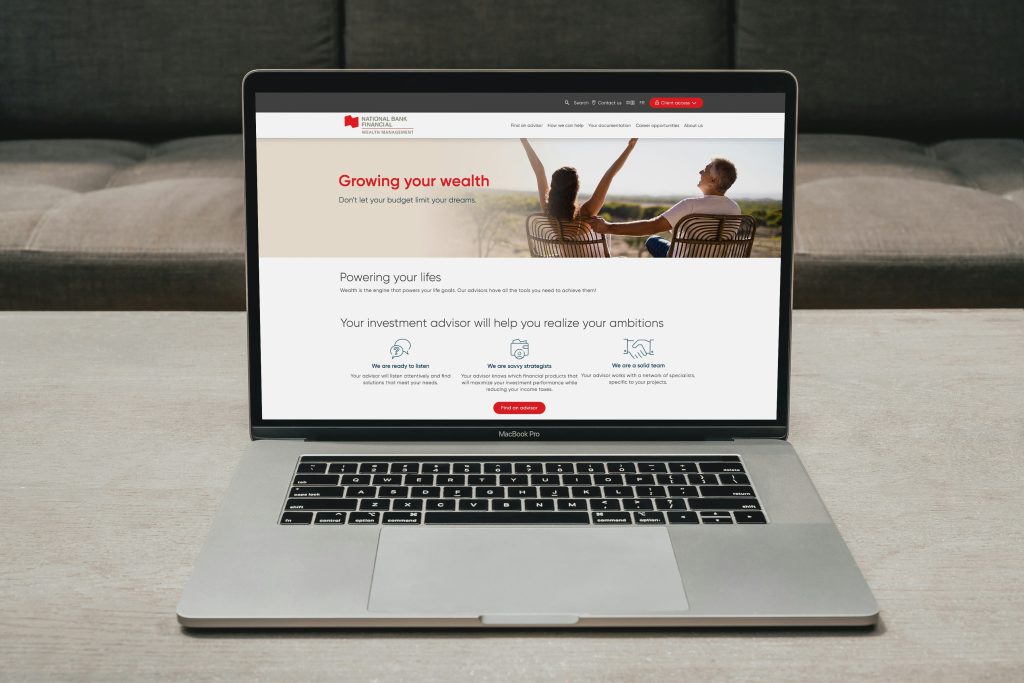Search engines are now the primary starting point for trip planning, making vacation rentals SEO the key to capturing guests before they ever open an OTA.
For property managers, this means SEO isn’t just a marketing add-on; it’s a core part of attracting direct bookings, reducing reliance on commissions, and building a recognizable brand.
Traditional SEO focused on ranking for keywords. Modern SEO for vacation rentals must answer questions, satisfy AI assistants, work seamlessly on mobile devices, and convert high-intent searchers into direct bookings—all while scaling across dozens or hundreds of properties.
A well-optimized website helps your properties appear in the right searches, enabling you to reach guests earlier in their planning journey, and convert high-intent traffic into reliable revenue. Whether you manage five rentals or five hundred, understanding SEO gives you more control over visibility, pricing, and guest relationships.
This guide is written for multi-property operators who need scalable SEO: clear property pages, destination landing pages, consistent templates, and the measurement routines that turn organic traffic into commission-free bookings.
In addition to established SEO practices, this guide addresses modern search behavior, including AI, voice queries, and technical must-haves like structured data and mobile speed so your listings can be found by both human users and AI travel assistants.
We’ve broken it down into 10 practical steps, covering the techniques and tools you’ll need, as well as the checklists that will help you stay on track for success.
Table of Contents (Click to hide)
- Step 1: How to build a scalable keyword or prompt strategy for vacation rental properties
- Step 2: What makes a high-converting vacation rental website?
- Step 3: How can technical SEO improve your booking engine performance
- Step 4: Why local SEO matters for multi-location property portfolios
- Step 5: Content that attracts travelers before they choose a booking platform
- Step 6: Build authority through strategic link building
- Step 7: How to turn website traffic into actual direct bookings
- Step 8: How to monitor SEO performance for multi-property portfolios
- Step 9: Technical and ongoing maintenance for your vacation rental website
- Step 10: Advanced SEO tactics that work for AI and voice search
- Conclusion
- FAQ
Step 1: How to build a scalable keyword or prompt strategy for vacation rental properties
Building a good SEO strategy is all about making sure that the right people see your listing at the right moment.
Start by sketching out the guest profiles that matter most to your business. Think about what type of guest books your villas, and whether this demographic is different for last-minute bookings breaks, compared to those who plan months ahead.
Consider the different motivations for booking your listings. For example, families may be searching for “kid-friendly beaches” whereas remote workers are looking for “fast Wi-Fi” and high-end groups search for “luxury villas with a pool”.
Once you have the profile of your priority guests, map each group onto the guest journey (awareness → consideration → booking) so that you have targeted content at each phase.
Next, run keyword research with a few reliable tools like Google Keyword Planner, SEMrush, Ubersuggest.
Aim for long-tail phrases that combine property type + feature + location (for example, “pet-friendly beachfront villa in Madrid”.
Why? Because long-tail keywords have lower competition and higher conversion potential.
Prioritize where you place your keywords. Put booking-oriented keywords on property pages and informational queries in blog posts or guides.
Organize your findings into keyword clusters per market or property type to scale content production without creating overlapping pages.
Finally, set measurable goals. What are your targets this quarter? How will you measure progress (rankings or bookings)? Who on your team owns each deliverable?
Remember that modern search behavior includes voice and AI-driven results, so content that reads naturally and answers common conversational queries will perform better in those formats.
Step 2: What makes a high-converting vacation rental website?
You should be structuring every page to meet searcher intent, and building each page to convert visitors into bookings. On-page optimization bridges the gap between a guest discovering your listing, and making a booking.
Start by structuring your site so each page has a clear purpose:
- Property pages target transactional keywords
- Location pages target geo research queries
- Blog posts target informational intent
Ensure URLs are clean and include keywords where relevant (e.g., /beachfront-villa-barcelona).
Titles and meta-descriptions are your first sale pitch, so craft them to encourage click-throughs, in a way that includes key information from the next page, such as “Beachfront Family Villa in Barcelona Coast – Sleeps 8 | Direct Booking”. This improves the guest booking flow, and you can even include a call to action (CTA) where space allows.

These days, guests want their experience to feel tailored and unique, so it’s important that each property has a unique description. Avoid copy-pasting the same text across many listings, and highlight what makes the property special.
Images are essential:
- Use real photos
- Compress them for speed
- Name the files descriptively (e.g., majorca-villa-pool.jpg)
- Write concise text that describes the image
- Write unique property descriptions that answer questions
- Include a keyword where natural
Add structured data to help search engines understand your content. For example, you can link relevant blog posts to your listings to make your page more discoverable.
Step 3: How can technical SEO improve your booking engine performance
Technical SEO is the behind-the-scenes work that keeps everything else running smoothly.
In today’s hyperconnected world, a large proportion of travel searches happen on mobile devices, so adopting a mobile-first mindset can give you a strategic edge.
Start by testing booking flows, calendars, and image galleries on a range of devices to ensure nothing breaks mid-booking. Page speed directly affects user experience and rankings (guests don’t have patience for lagging websites) so prioritize compressing and resizing images to ensure speedy loading times, trim unnecessary third-party scripts, and use browser caching and a content delivery network (CDN) to serve content quickly across regions.
Security is non-negotiable: use HTTPS sitewide and keep all software updated. Make it easy for search engines to crawl your site with an up-to-date XML sitemap and a robots.txt that blocks only irrelevant areas. Monitor and fix crawl errors with Google Search Console.
For multi-property portfolios, canonical tags are essential. They tell search engines which page is the main one and prevent duplicate-content problems that can dilute your visibility.

If you operate across different international markets, implement hreflang correctly to show the right language-version in the right market. Regular technical audits keep the plumbing healthy and ensure your content can be discovered and ranked without surprises.
Finally, make technical audits a routine habit. A healthy technical foundation makes sure all your great content can actually be found, indexed, and ranked—without any hidden surprises undermining your efforts.
Step 4: Why local SEO matters for multi-location property portfolios
If a guest already knows where they want to visit, your goal is to make your business and properties the obvious local choice.
Local SEO puts you in front of guests who already know their destination and are close to booking. Start by claiming your Google Business Profile if you have a local presence or office; complete the listing with accurate name, address, phone number (NAP), and photos, and keep these key details consistent across directories and listing sites to avoid confusion and strengthen local signals.
If you manage properties across multiple towns, build focused location landing pages for each location. These pages should answer local queries such as transport tips, nearby attractions, amenities, and seasonal highlights, linking directly to your most relevant properties with well chosen geo-targeted keywords in headings, copy, and metadata.
Collaborate with tourism boards, local guides, restaurant blogs and event organisers to earn high-value local backlinks that boost authority and visibility.
Once again, reviews are one of the most powerful local ranking and conversion signals, so make it easy for guests to leave positive feedback. You can send polite reminders after their stay, and respond to reviews promptly. A steady stream of recent, positive reviews drastically improves the chance that nearby travelers will click through and book.
Step 5: Content that attracts travelers before they choose a booking platform
Content is one of the strongest levers in vacation rental SEO because it reaches guests early in their travel journey.
To provide effective content start by putting yourself in the mindframe of your guests. Identify common questions travelers ask themselves before booking, and think about what they are likely to type into a search engine.
For example, a traveller might think, “The Algarve’s beaches look great, but I wonder if there’s enough going on to entertain both myself and my kids”.
They may then search for, “best beaches in Algarve for families”.

Create content that answers these queries better than your competition.
You can provide anything from long-form location guides to packing lists, but make sure the information is easily digestible and paints a picture of your brand as a reliable source of usable information, long before a guest chooses a platform to book on.
Storytelling strengthens your brand identity. Instead of generic descriptions, share narratives: a family discovering local wildlife near your cabin, a couples’ experience at a local restaurant, or a behind-the-scenes look at how you prepare properties for guests. These stories build emotional connection and nudge visitors toward booking directly.
Boost engagement through visual content: short videos of a balcony view, walking tours of the neighborhood, or 20-second reels of your property’s interior help users stay on your website longer – a positive SEO signal.
Finally, promote your content. Share posts through Instagram, Facebook groups, email newsletters, or partnerships with local businesses. The more visibility your content gets, the more backlinks and engagement it earns, which feeds your SEO performance over time.
Step 6: Build authority through strategic link building
Backlinks are really useful for your business, because they tell search engines that your website is credible and worth ranking.
Think of it as a digital character reference – the more reliable the source, the more valuable the backlink. It’s simple really; sites that are authoritative, relevant to travel, or part of your destination’s ecosystem are going to help you out the most.
Start with easy wins: listings on local tourism boards and local directories reinforce your location relevance and are usually free.
Next, build relationships with travel bloggers or journalists who write about your region. Offer a property stay in exchange for a feature, or provide a high-quality guest post with your own photography – these often earn natural backlinks. Collaborations with restaurants, tour operators, surf schools, wineries, or event venues are also effective. If you cross-promote each other’s businesses, both sides benefit.

Press opportunities are powerful. If your properties host weddings, retreats, or unique special events, pitch your stories to regional publications or lifestyle websites. When your brand appears in articles, you’ll boost traffic and search visibility.
While doing this, monitor your backlink profile regularly. Tools like Ahrefs or SEMrush help you identify toxic or spammy links that could harm your rankings, and it’s worth revisiting the businesses, bloggers, and entities with whom you have backlinks to ensure they’re still relevant and suitable for your business.
Avoid paid links, link farms, or shady networks. These risk penalties down the line, and can cause long-term problems that outweigh the short-term benefits.
Step 7: How to turn website traffic into actual direct bookings
SEO will help bring organic traffic to your business, but this is no good if it doesn’t translate into bookings. An important factor in building a sustainable vacation rental strategy is conversion optimization, which turns your organic traffic into revenue.
A good place to start is with user flow. Here’s a quick checklist:
- Make sure your “Book Now” button is clearly visible on every key page
- The availability calendar must load quickly
- Pricing should be transparent
- Guests shouldn’t need to click more than necessary to reach checkout.
Visual branding and ease-of-use is important too. If your booking engine looks outdated or confusing, users will bounce, even if your SEO is strong.
Trust signals play a major role here. Display guest reviews prominently, especially recent ones. Guests want honesty and clarity at a glance. Add visible secure payment icons, and short explanations of your cancellation or refund policies. If your properties are professionally cleaned or if you offer hotel-level amenities, say so.
Direct booking incentives help reduce OTA dependency, and earn you more revenue per booking. Offer perks such as a slightly better rate, late check-out, a welcome gift, or a flexible cancellation window for those who book directly, and make these benefits clear on your website and in your booking flow.
Step 8: How to monitor SEO performance for multi-property portfolios
You won’t always know what is working at the surface level, and this is where analytics is so important.
Use Google Analytics and Search Console to track which pages convert well, and which pages don’t. If high-traffic pages don’t convert, review the page design, and make changes. Continue to monitor its performance and update where necessary.
Configure your Analytics and Search Console for success. Build a simple reporting dashboard that shows the metrics you care about: conversions from organic traffic, top landing pages, where people exit, and which keywords drive bookings.

Revisit these numbers weekly to spot sudden drops or quick wins, and run a deeper monthly analysis to identify longer-term trends. Perform a quarterly strategy review to reassign priorities and update your keyword roadmap.
When you find pages that convert well, analyse their structure (headline style, length, imagery, CTA placement) and replicate those elements across similar property pages.
For pages that underperform, decide whether to refresh the content, improve on-page signals (titles, schema, images), or merge them into higher-performing pages to avoid cannibalisation.
Use A/B tests. This is where you trial two versions of a CTA or booking flow (different text, color, button placement) and see which version increases conversion.
Finally, remain adaptable. Search behavior evolves (voice and AI queries are rising), so keep learning from user queries in Search Console and update content to match how people actually ask questions.
Ultimately, treat SEO as an ongoing cycle. Track performance, learn from the data, and iterate your website to that many small improvements compound into sustained growth.
Step 9: Technical and ongoing maintenance for your vacation rental website
As you add more listings content to your website, things that once loaded quickly can slow down or break. Performance issues like this can lead to guest churn and ranking regression – both of which will damage your revenue.
That’s why it’s important to regularly review the technical side of your service. Think of technical maintenance as preventive care for your website.
It can help to establish a regular routine. Schedule quarterly technical audits that cover mobile usability, page speed, crawl errors, indexation issues, and security vulnerabilities. Tools such as Google PageSpeed Insights, Search Console, and a basic site crawler will highlight actionable items like oversized images, or orphaned pages.
Keep all platform components up to date. This includes your CMS, booking widgets, and server software, to reduce security risks and incompatibilities.
If you offer multi-language content, monitor hreflang implementation to ensure the correct regional pages serve each audience.
Finally, periodically refresh outdated blog posts to keep the site current. This can be a good time-saver too; repurposing old content is often faster and more effective than always creating new pieces.
Step 10: Advanced SEO tactics that work for AI and voice search
Once your SEO basics are solid, it’s time to look into advanced tactics to take your online booking game to the next level. You can start layering on more advanced tactics to boost visibility and attract higher-value guests.
One of the most impactful upgrades is structured data. By adding schemas like VacationRental, Offer, AggregateRating, and VideoObject, you help search engines (and AI assistants) understand your listings more clearly. This can lead to higher click-through rates without spending anything on ads.

Implement comprehensive structured data
Structured data (schema markup) is the bridge between your content and AI understanding. It tells machines exactly what information means.
Voice and AI-driven searches are also becoming important. People think and speak queries differently than they type them, so adding FAQ sections and short, direct answers can help you appear in voice results or AI summaries. It’s a small change that can make a big difference.
Video is another strong feature for your website. Property walkthroughs, short-form reels, or virtual tours tend to boost engagement and keep visitors on your site longer. If you operate in several markets, a proper multilingual strategy is essential. Use hreflang, translate content thoughtfully, and research keywords in each language.
Finally, think of advanced SEO as an ongoing testing ground. Try A/B testing your booking buttons, experimenting with mobile-only offers, or tweaking lead-in messages. Measure everything, keep what works, and build from there.
Frequently Asked Questions (FAQ)
How long does it take to see results from vacation rental SEO?
SEO is a long-term strategy. Most vacation rental operators begin seeing measurable improvements in 3-6 months, with significant results typically appearing within 6-12 months. Technical fixes (page speed, mobile usability) can impact rankings within weeks, while content marketing and link building compound over time. The timeline depends on your starting point, competition level, and consistency of implementation. Sites with existing authority may see faster results than brand-new domains.
What’s the difference between SEO for vacation rentals and hotel SEO?
Vacation rental SEO emphasizes property-level pages (individual listings) rather than room types, and typically targets more specific long-tail keywords like “pet-friendly villa with pool in Algarve” rather than broad branded searches. Multi-property operators need scalable systems for creating unique descriptions across hundreds of listings. Additionally, vacation rentals benefit more from local partnerships, destination content, and direct booking incentives since they compete directly with OTAs rather than operating within them.
Should I focus on Google or other search engines?
Google dominates search with 90%+ global market share, so it should be your primary focus. However, don’t ignore Bing (especially in the US market), which powers Microsoft’s AI tools and voice assistants. The good news: most SEO best practices (quality content, technical optimization, structured data) work across all search engines. If you operate in specific regions, consider local engines (Baidu in China, Yandex in Russia), but for most Western markets, Google optimization delivers the highest return.
How important are reviews for vacation rental SEO?
Reviews are critical for both SEO and conversions. From an SEO perspective, reviews signal trust and quality to search engines, improve local rankings, and increase click-through rates when displayed as rich snippets. For conversions, properties with 20+ recent reviews book significantly more often than those with sparse feedback. Implement a systematic review collection process: send automated requests 2-3 days post-checkout, respond to all reviews promptly, and display recent reviews prominently on property pages.
Can I do SEO myself or should I hire an agency?
It depends on your team’s capacity, expertise, and portfolio size. For small operators (5-20 properties) with time to learn, DIY SEO using this guide and free tools (Google Analytics, Search Console, Keyword Planner) is feasible. Mid-sized operators (20-100 properties) often benefit from hiring a part-time SEO specialist or consultant. Large portfolios (100+ properties) typically require dedicated in-house staff or an experienced agency. Regardless, understanding SEO fundamentals helps you evaluate vendors and make strategic decisions.
What’s the best keyword strategy for multiple similar properties?
Avoid creating nearly identical pages that compete with each other (keyword cannibalization). Instead, create a hub-and-spoke structure: one comprehensive location page targeting broad keywords (“beachfront villas in Algarve”) that links to individual property pages optimized for ultra-specific variations (“4-bedroom beachfront villa Albufeira pool”). Each property page should have a unique angle: different amenities, guest capacity, proximity to specific attractions. Use canonical tags if properties are truly identical to consolidate SEO value.
How does voice search affect vacation rental SEO?
Voice queries are longer, conversational, and question-based compared to typed searches. Optimize by creating FAQ sections with natural-language questions (“Where should I stay in Lisbon with kids?”), providing direct answers in the first sentence, targeting long-tail keywords that mirror speech patterns, and aiming for featured snippet positions (voice assistants often read from these). Structure content with clear question headings and concise, informative responses.
What structured data (schema markup) should I implement?
Priority schemas for vacation rentals include: VacationRental schema (property details, amenities, location), Offer schema (pricing, availability, booking URL), AggregateRating schema (guest review summaries), FAQPage schema (common questions about properties), VideoObject schema (property tour videos), and BreadcrumbList schema (navigation paths). These help search engines and AI assistants understand your content, potentially earning rich search results with enhanced visibility (star ratings, pricing, availability displayed directly in search).
Should I create separate pages for each property or group similar listings?
Create individual pages for each distinct property. Unique pages allow precise keyword targeting, better user experience (guests see exactly what they’re booking), and improved conversion rates. However, if you have 50 nearly identical apartments in the same building, consider a hybrid approach: one detailed building/location page with an availability calendar showing all units, then minimal individual pages for each unit. Always avoid duplicate content—every page needs unique descriptions and value propositions.
How can I compete with OTAs like Airbnb and Booking.com in search?
OTAs have massive domain authority and marketing budgets, so competing for ultra-competitive keywords like “vacation rentals” is difficult. Instead, focus on: (1) hyper-local keywords they don’t target (“pet-friendly villa walking distance to Cascais Marina”), (2) informational content they don’t create (destination guides, travel tips), (3) your unique brand story and local expertise, (4) direct booking incentives (lower prices, perks), and (5) superior customer service. Many travelers research on OTAs then book direct when they find your website offers better value and personal attention.
What’s the ROI of vacation rental SEO compared to paid advertising?
SEO typically delivers better long-term ROI than paid ads, though it requires more upfront investment and patience. Once ranked, organic traffic is essentially free and compounds over time. Paid ads (Google Ads, Meta) generate immediate traffic but stop when budget runs out. A balanced approach works best: use paid ads for quick wins and seasonal campaigns while building SEO for sustainable, cost-effective traffic. Most successful operators allocate 60-70% of digital marketing budget to SEO and 30-40% to paid channels, adjusting based on seasonality and business goals.